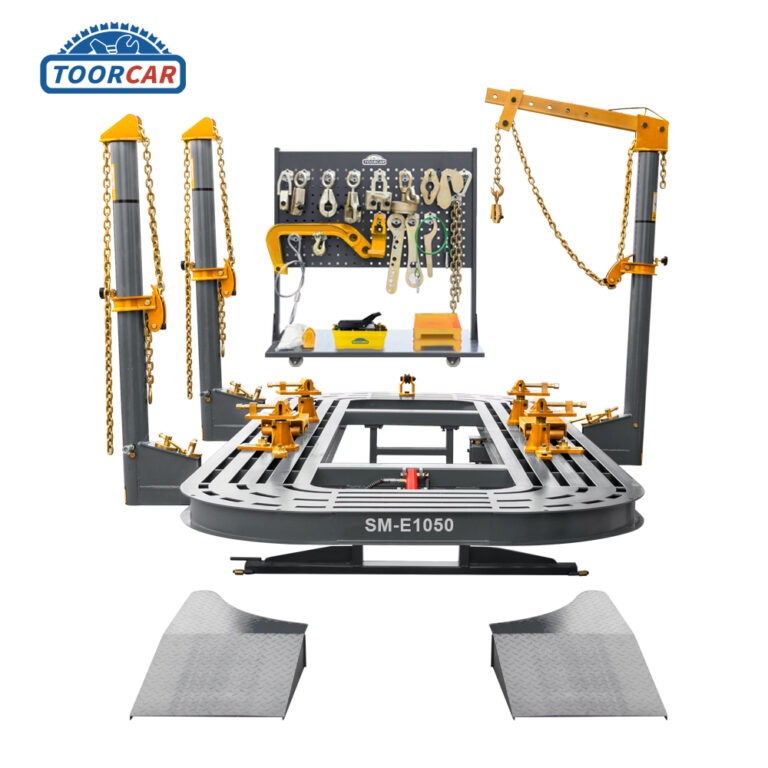The Operation Procedure And Role of The Wheel Alignment Machine
The car four-wheel alignment machine comprises a data acquisition unit equipped with four measuring probes. These probes contain 3D sensors that detect the light coordinates emitted by infrared tubes on the opposite probes. The gathered data is transmitted wirelessly to a receiver in the cabinet and then to the computer host via the COM port in the industrial control machine for calculation and processing.
Here is the content list:
-
Wheel alignment operation procedure
-
The role of wheel alignment
-
Application of wheel alignment
Wheel alignment operation procedure
1. Pre-positioning vehicle inspection
– Ensure there are no gaps or damages in the vehicle’s suspension, wheel bearings, and steering system.
– Verify that the tire tread depth does not exceed a tolerance of 2mm and that the tire inflation pressure meets the specified requirements.
– Check that the vehicle is equipped with the full weight of the necessary equipment.
2. Positioning requirements
– When placing the vehicle on a fixed cured lifter, it should be driven into the lifter so that the vehicle center, lifter, and turntable center align.
– Modify vehicle specifications if necessary.
– Follow the steps indicated by the positioner precisely, ensuring that no steps are omitted. Perform wheel deviation compensation and tire detection as required, and input the relevant tire detection data into the instrument accordingly.
– Adjust wheel alignment parameters (such as toe and camber) according to each model’s “maintenance manual” and correct any deviations found during testing (except where adjustment is not possible for the original vehicle).
– Adhere to each model’s “maintenance manual” when adjusting positioning parameters.
– Save and print the positioning results.
The role of wheel alignment
– Enhances driving safety.
– Reduces tire wear.
– Keeps the steering wheel straight during straight-line driving.
– Ensures automatic steering wheel realignment after turning.
– Improves the sense of driving control.
– Lowers fuel consumption.
– Decreases wear on suspension components.
Application of wheel alignment
- Affects vehicle driving performance (such as incorrect steering wheel alignment when driving straight on a flat road, veering to the left or right, body instability, steering wheel shaking, and floating sensations while driving).
- Causes abnormal tire wear, including severe tire “eating” (note that abnormal tire pressure can also lead to uneven wear, with high pressure accelerating central tread wear and low pressure causing increased wear on tread edges; one-sided wear may indicate camber angle deviation).
- Results from chassis and suspension damage due to accidents.
- Necessary after replacing chassis components such as suspension parts, steering systems, tripods, or connecting rods.
For more information about wheel alignment, feel free to contact us at www.toorcar.com.





